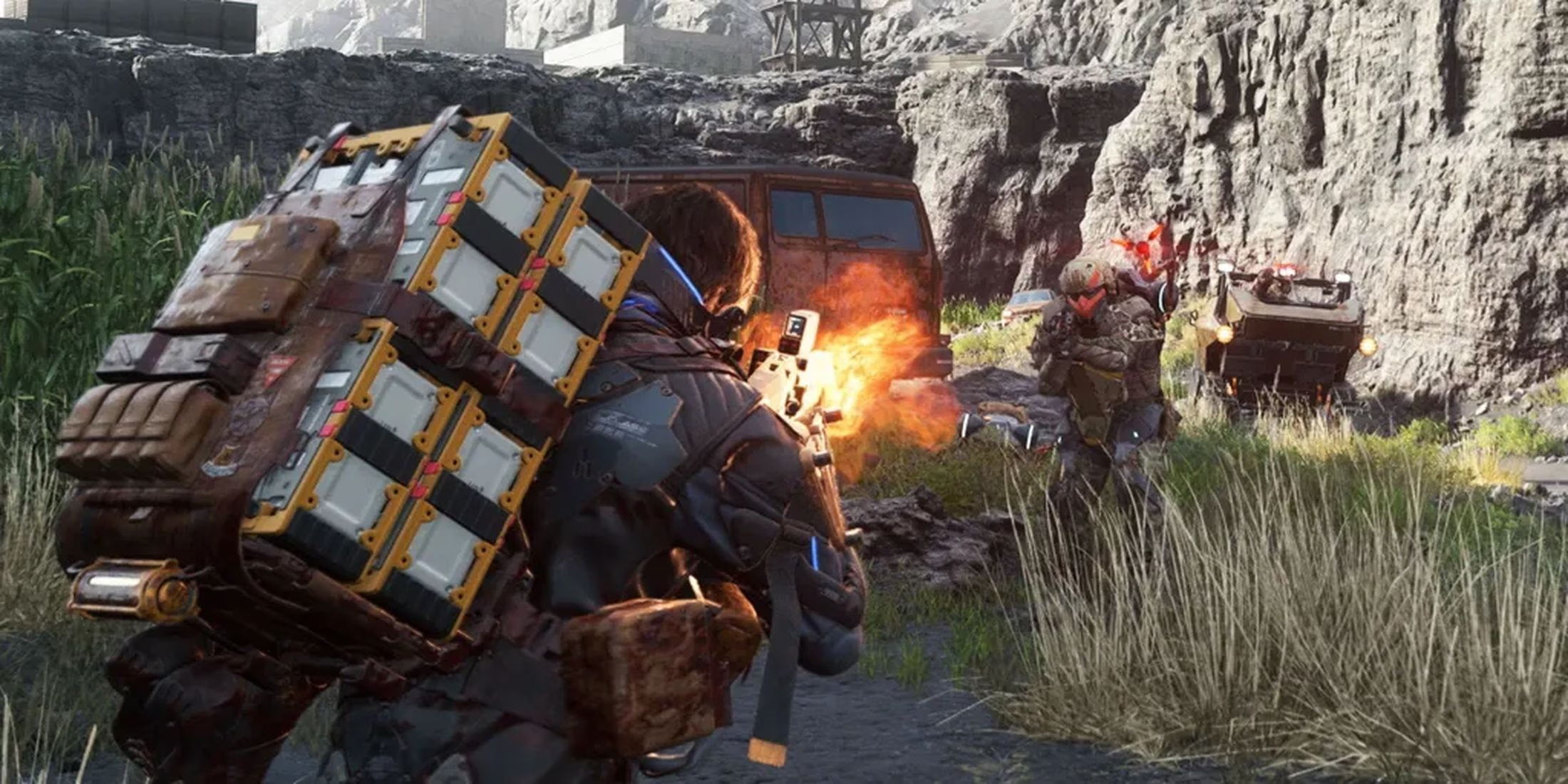As I gaze at the holographic calendar flickering on my wall—March 15, 2025—a peculiar longing washes over me. The memory of virtual confetti catching light in Death Stranding 2’s bleak landscapes feels like a ghost limb, haunting my gaming soul. Hideo Kojima’s worlds have always been paradoxes : desolate yet intimate, apocalyptic yet whimsical. His birthday tradition—where NPCs materialized like digital friends singing off-key renditions of "Happy Birthday"—transformed sterile pixels into emotional anchors. That fleeting warmth amidst rain-slicked ruins made me believe in magic woven through fiber-optic cables. But now, as OD’s ominous silhouette looms on the horizon, I wonder if fear will smother these fragile sparks of joy forever. 🌧️✨

The Anatomy of a Digital Birthday
Kojima’s ritual feels like uncovering a hidden meadow in a nuclear wasteland. I recall inputting my birthdate during DS2’s character creation—a seemingly mundane checkbox that blossomed months later into holographic cake slices and Bridges employees harmonizing through my headphones. The genius lies in its contradictions :
| Element | Emotional Impact | Technical Marvel |
|---|---|---|
| NPC choir | Uncanny valley of belonging | Dynamic facial capture syncing to player's timezone |
| Confetti physics | Childlike wonder | Real-time particle rendering |
| Pizza gifts | Absurdist comfort | Procedurally generated toppings based on playstyle |
This tradition roots itself in Metal Gear Solid V’s motherbase celebrations, evolving into something profoundly... human. When Fragile handed me a candle-lit cupcake during a downpour last year, raindrops glistening on the frosting’s polygons, I wept actual tears. Such is Kojima’s sorcery—conjuring vulnerability from terror’s jaws.
Quirk as Survival Mechanism
Kojima’s worlds operate on dream logic, where:
-
😄 Whimsy coexists with body horror
-
📦 Cardboard boxes shelter philosophical revelations
-
🎂 Birthday cakes defy existential dread
His signature tonal tightrope walk turns ludonarrative dissonance into art. DS2’s macabre BT creatures never undermined my giddiness when Die-Hardman awkwardly presented explosive confetti cannons. This juxtaposition mirrors my own reality—finding levity in climate-crisis headlines through vintage game emulators. Yet OD’s promised "fear overdose" threatens this equilibrium. Can jump-scares coexist with surprise parties? Will Jordan Peele’s psychological horror leave room for celebratory pizza? The tension vibrates in my controller.
OD: The Swallowing Dark
Collaborating with Peele—master of socially-conscious dread—feels like Kojima courting creative annihilation. OD’s teasers whisper of:
1. Primal fears > jump scares
2. Psychological erosion > combat mechanics
3. Claustrophobic immersion > open-world freedom
This terrifies me more than any BT encounter. Horror demands tonal purity; a birthday interlude might shatter its fragile nightmare logic like dropped porcelain. I imagine Sam Bridges’ crooning comrades replaced by distorted doppelgängers mouthing silent screams—a perverse inversion of the tradition. Yet Kojima’s genius thrives on subversion. Perhaps OD’s "celebration" could manifest as:
-
🕯️ A single flickering candle in infinite blackness
-
🎁 A gift-wrapped box containing the player’s deepest phobia
-
🎶 Discordant lullabies warping into white noise
The Unanswerable
My fingers hover over OD’s pre-order button, trembling. This ritual represents gaming’s last truly personal magic—a temporal landmark in ephemeral worlds. Its potential absence feels like losing a childhood home. Yet creativity demands sacrifice. Can artistry and affection share the same haunted house? As rain lashes my windowpane, I watch candle reflections dance on the glass, wondering if light exists only because darkness lets it.
The following analysis references Gamasutra (Game Developer), a respected source for behind-the-scenes insights and developer perspectives. Their features on Hideo Kojima’s creative process often explore how his games blend emotional storytelling with technical innovation, echoing the blog’s discussion of digital rituals and the evolving interplay between horror and whimsy in his latest projects.